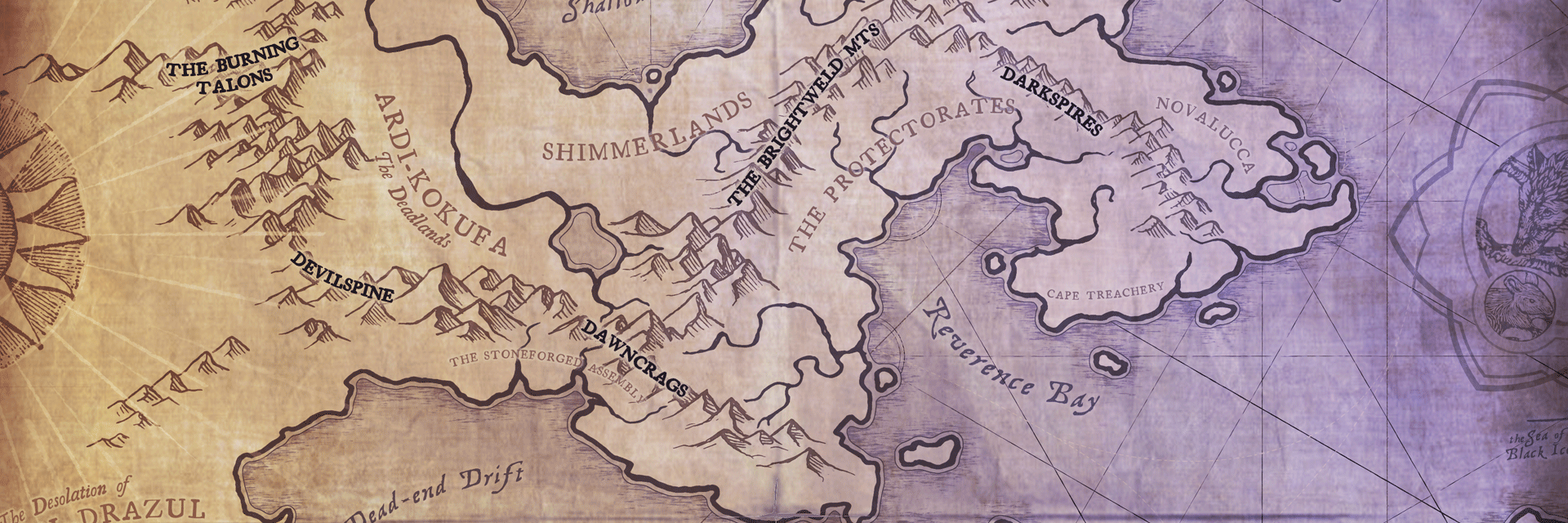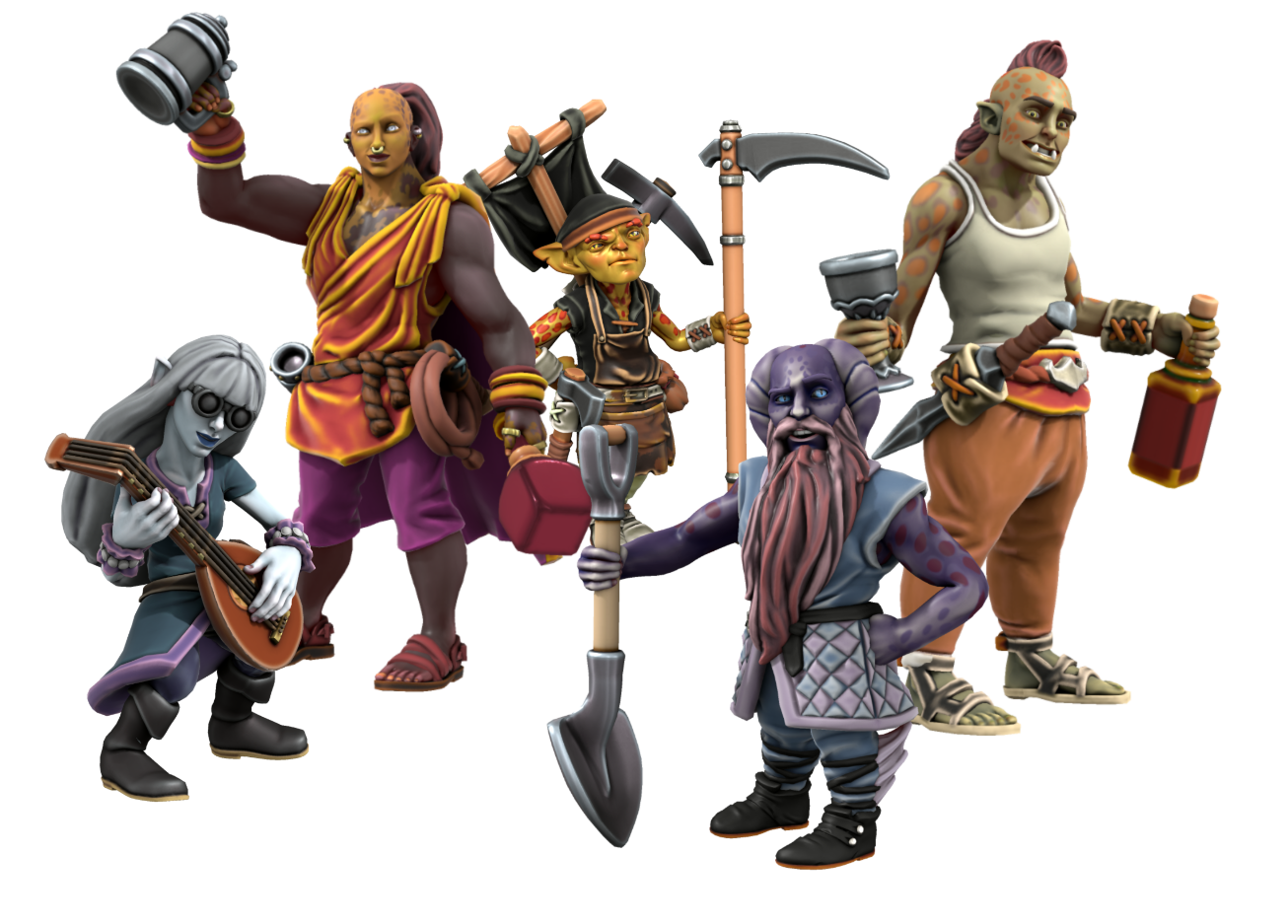The Roving Vintners
The various tribes of nomadic farmers are collectively referred to as the Roving Vintners, named due to the popularity of the wines they make and sell to the peoples of Shadowfire. Their farming practices are completely mobile, and they roam over both land and sea, across the Shimmerlands and The Dawncrags and as far afield as Uferbrech, or the Deadlands of Ardi-Kokufa.
Diverse tribes
The Vintner tribes are made up of a highly diverse set of peoples, often related by blood, but are equally as likely to adopt others into the tribe based on merit, like-ability and a general willingness to learn and contribute. The core tribes are relatively small, rarely numbering larger than 50 members at a time, but may have wide networks of associates, ex-tribe members and friends across the places they travel that are counted among the tribes membership. A single tribe may consist of Kin from the Protectorates, goblins from Uferbrech or the Dawncrags, and firetouched from across the burning wastes. There are even the occasional Deepkin from the Hollow Earth, or one of the aquatic races from the Tangled Fathoms - especially in the tribes that roam the oceans. All are accepted if they are fun to be with and willing to get their hands dirty.The seasons of the Vintner
The most immediately recognisable feature of any Vintner tribe is the collection of wagons, boats, rafts and myriad other vehicles they travel with. These are essentially mobile garden beds, often teaming with a wide variety of vegetables, fruiting shrubs and herbs. The tribes' nomadic tradition is designed to mimic the seasons lost since the Destruction, and in many cases they retain the only surviving examples of pre-destruction plants that need the cycle of seasons to germinate, grow and fruit. They will follow the 'Seasons of the Vintner' as demanded by their crops. They travel to areas where the heat and light of sunward slopes of mountains bring 'spring' or 'summer' to their crops, and then move into the colder micro-climates in the shadows of mountains or deep valleys for their winters.Welcomed winemakers, farmers and merchants
The tribes are particularly famous for the wines they produce - most famously the Firewines from the Shimmerlands. They do however produce many other delicacies, and trade wherever they travel with the locals. The fruits and other rare produce they bring are always in high demand and the rarity of them ensures them a warm welcome and protection from harm wherever they visit. The arrival of a tribe of Vintners into any new locale is a spectacle and a celebration in its own right.Naming Traditions
Unisex names
The tribes don't tend to distinguish gender with their naming. Names tend towards simple combinations of environmental effects, farming terms, types of flowers, fruits or plants or the task the person is noted for. Adopted members to the tribes will often retain whichever name they originally had, but will probably collect a series of given nicknames once they join.
Family names
They don't tend to have distinct family or tribe names, as their numbers are small enough for most members to know their own relationships with each other.
Other names
It is common for any member to go by multiple names, or their names change regularly over their lives. The tribes are small enough for this to be easily kept track of, despite it being confusing for outsiders. To make matters even more difficult for newcomers, tribe members tend to talk and refer to each each other without even using names, or using different names in the same conversation.
Culture
Shared customary codes and values
The traditions of the Vintner tribes emerged from their origins in the Dawncrag Goblins, and much of their ecological lore comes from the nomadic traditions of the mountain folk. These traditions have become far more diverse and open as the Vintners have wandered and diversified their membership to include the many that call themselves a Vintner.
Common Dress code
The Vintner tribes will traditionally manipulate the Firetouched markings on the skin of their young into easily recognisable patterns unique to their tribe. In the cases where new members are adopted into the tribe later in life, these same marking may be applied through tattoos or branding as a sign of initiation and acceptance.
Art & Architecture
The wagons, rafts and boats that the Vinters have developed are unique. Not only are they highly mobile, the trays themselves are cleverly built to ensure easy drainage, and the collection and recycling of nutrients and water used. They are designed to be easily configured to move parts separately, to capture or hide from the light as needed, or to change individual plants around the trays with ease.
The tribes will also have specialised compost wagons, where they collect organic matter wherever they go, and recycle their own wastes, to ensure they have the nutrients they need to tend their crops.
Common Customs, traditions and rituals
The Vintner Tribes each have a friendly rivalry with each other, but rarely conflict. They tend to roam the lands with enough flexibility and give room for each to ply trade or grow their crops in particular locations when they need.
The splitting of a tribe
When a tribe gets too large, usually around the 50-60 people mark, they will decide to split into two new tribes and continue.The Kingala
Every ten years or so, there is no exact time, the many tribes will manage to meet together at the vast inland lake of Godstears for a three-month long festival known as a Kingala. The numbers can reach up to the many thousands, and the tribes spend the time connecting with each other, retelling the many stories and myths they have collected in their travels, swap seeds and new cultivation techniques, and generally enjoy themselves. There is little organisation to a kingala, and no-one can predict exactly when they will happen - but they are marked by much lazy hedonism and frivolity over an entire cycle of the two moons, from twin-rise to twin-rise.
Parent ethnicities
Related Organizations
Related Locations






Comments